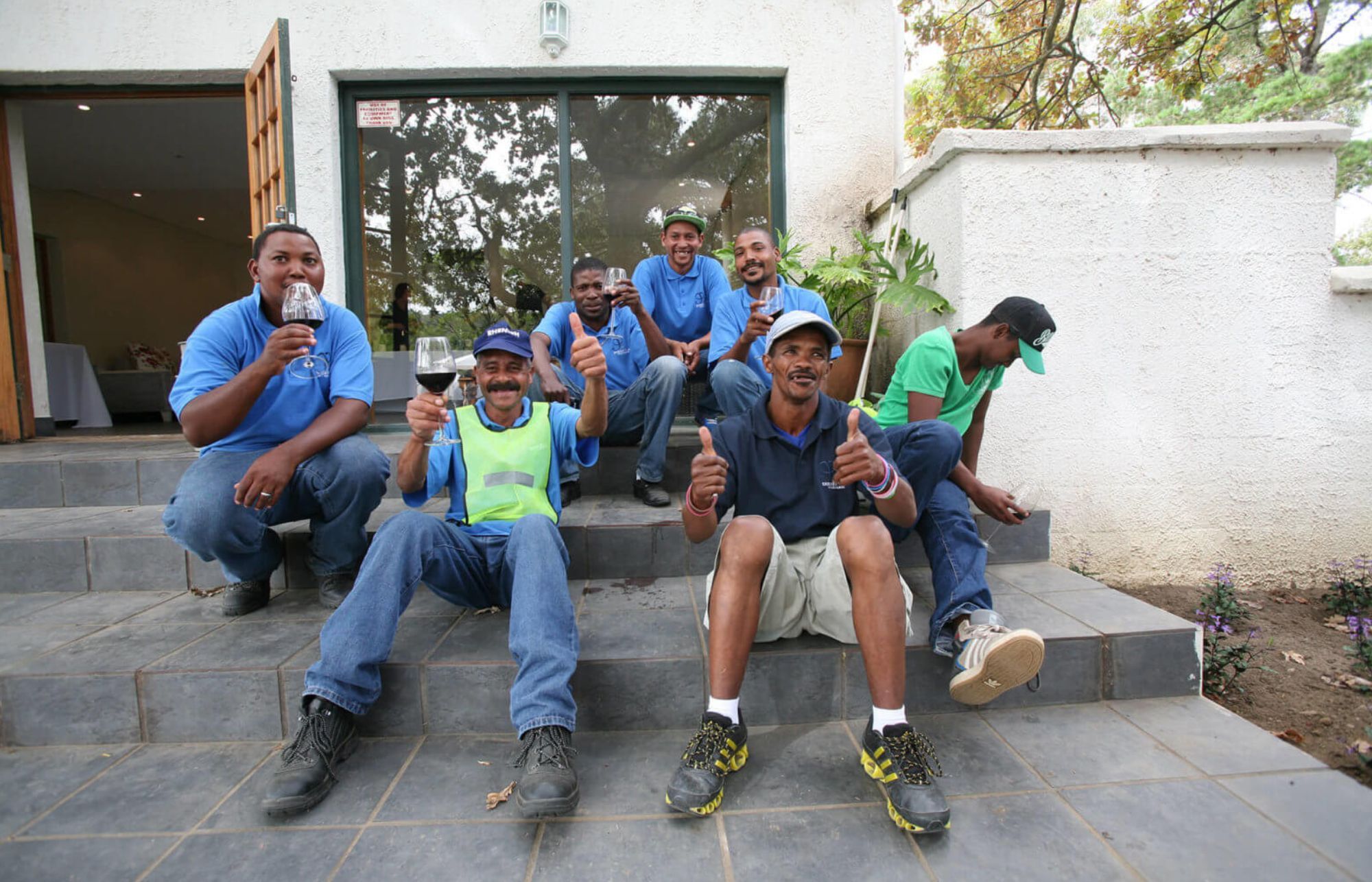What can I say about Journey’s End Vineyards? Well, for a start, it’s one of the most well-known wine names from South Africa with many Journey’s End wines ending on bar and restaurant lists up and down the UK.
Each time I’ve tried the wines I’ve been more than happy to finish the glass and order another. That’s a given. The wines are great. But, as I was to find out at a recent meeting with winemaker Mike Dawson, Journey’s End has so much more going on than simply a range of great value, premium, easy-to-drink Western Cape wines.
Who is Journey’s End?
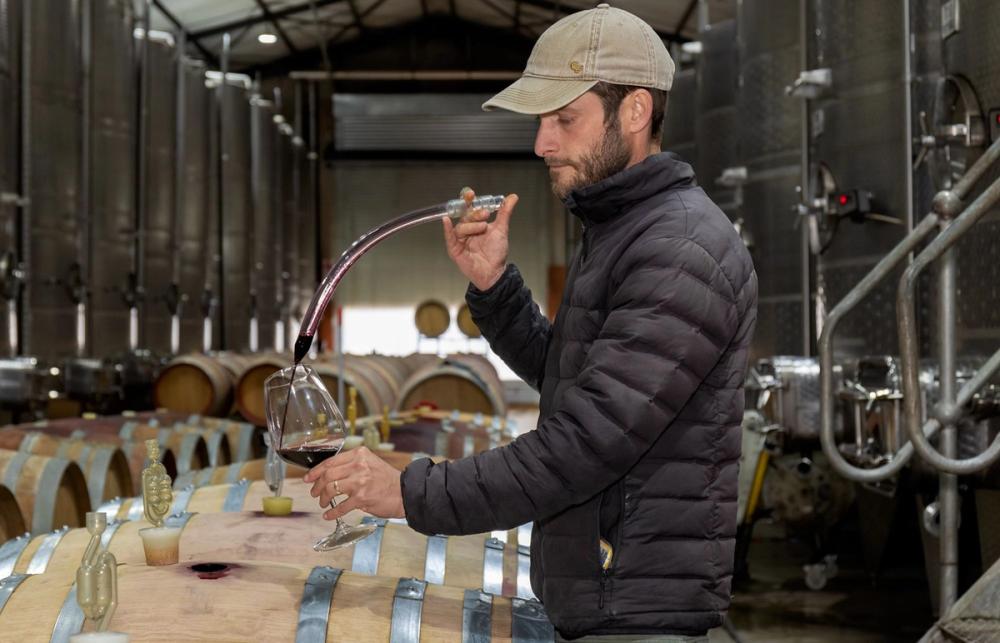
Mike Dawson: “Globally it’s pretty true but in South Africa it is definitely true that winemaking is a white male dominated position."
In 1995, the Gabb family from Shropshire purchased a beautiful, but dilapidated vineyard in the southern part of Stellenbosch. It was great timing, as the South African wine industry began to evolve at pace as the monopolies ended. A thirsty export market was keen to explore what the Western Cape could offer and were increasingly delighted by the sustainable and ethical ethos of the Gabb family at their farm.
Specialising in Chardonnay and Bordeaux varieties, the team now grows “nearly every noble grape under the sun” according to Mike Dawson, the winemaker who has taken on the mantle from Leon Esterhuizen, who himself has moved to the overseeing role of cellar master. Dawson was in the UK to promote the new vintages of the Journey’s End premium ranges, which gave me a chance to ask him just what he thinks makes Journey’s End so special.
Picture perfect vineyard setting

All Journey's End vineyards are planted on south-facing slopes
The Journey’s End vineyards sit in the South-East of the famous Stellenbosch valley, to the east of Somerset West and just to the north of the village of Sir Lowry’s Pass. The vineyard is set amongst the Schapenberg hills, enclosed by the Helderberg mountain as it boomerangs around the vines and slopes down towards the ocean to the South.
“The Helderberg is also known as the shining mountain,” revealed Dawson. “As the sun sets it illuminates the mountain showing what great late evening sun we get in the growing season.”
Despite the extra sunshine, the vineyards remain a perfect place for fresh grapes. All vineyards are planted on south-facing slopes (the cooler side in the southern hemisphere). The average temperature is also 4-5°C cooler than central Stellenbosch and with a larger diurnal range. It all fits in to achieving a longer ripening period for high natural acidity and flavour precursors in the grapes.
Journey’s End also lays claim to having the most southerly vineyard block in the Stellenbosch appellation, at only 6kms from the coast. This means plenty of exposure to the south easterly Cape Doctor winds flowing in from False Bay. It can be really helpful to reduce any fungal issues, but it can have its downsides.
“2 months ago, all our solar panels (Journey’s End fully converted to solar in 2014) were blown off by 110km/h winds,” rued Dawson.
Celebrating the uniqueness of the Western Cape
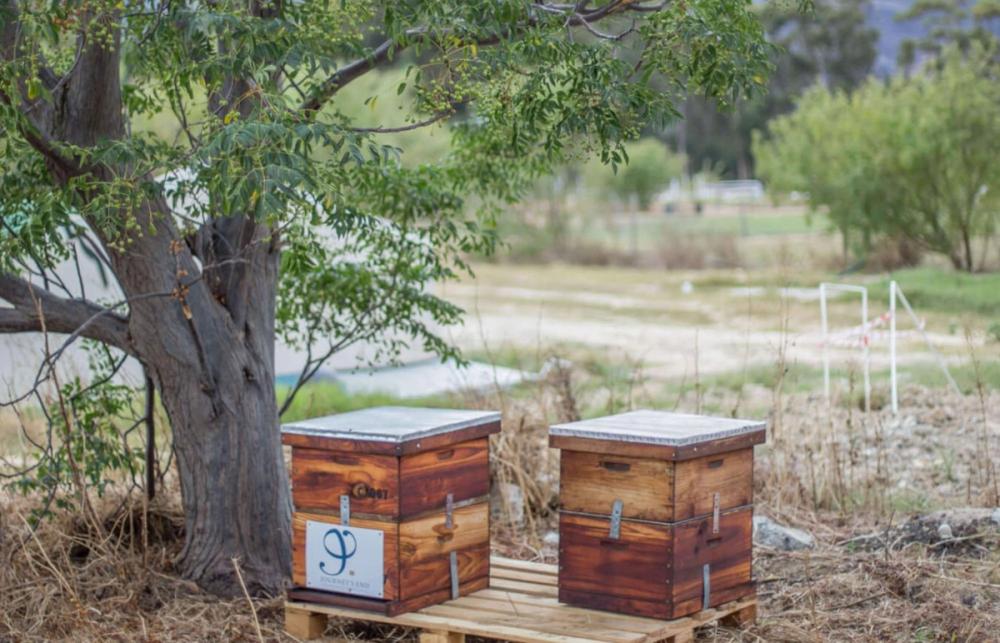
Journey's End got WWF Conservation Champion status for continued commitment to sustainable farming
Over lunch we chatted more about Journey’s End's proud environmental programme. Given recent climatic issues, the first topic of conversation was on the use of water.
“We have our own dam system which we then use to supply our efficient drip irrigation system,” explained Dawson. “We have quite steep slopes around, as we range from 200m-300m above sea level, into which we’ve dug nearly 17kms of water channels to capture the rainflow to supply the vines as and when we need it.”
Their work saw them receive 2021’s Water Management award at the Drinks Business’ Green Awards.
The entire property itself is quite large, at around 120 hectares in size. Dawson and the team are wedded to as minimal intervention as practicalities allow, in order to show off the abundant terroir, from soils to South Africa’s famous biodiversity.
“The soils are all decomposed granite soils which allow for deep root development,” enthused Dawson. “But differences are plenty. Our glenrosa soils, for example, go from red to almost purple in colour and are more oxidised and ironised. There are also shallower soils on the lower the slopes, which gives great concentration for our Shiraz.”
The Journey’s End winery is surrounded and intertwined with Fynbos, a unique type of vegetation that only grows in South Africa. Dawson believes it adds its own special feel and flavour to the wines, in the same way that the wines of Southern France are famed for their garrigue aromas and flavours.
“We really want to encourage these diverse indigenous species,” explained Dawson. “We had some Blue Gums and Pines on site, but these are imported species we’ve now removed and replanted with native species, like Spekboom, to promote our unique terroir.”
Early in 2021, their efforts were rewarded with WWF Conservation Champion status, for continued commitment to sustainable farming and conservation of native fauna and flora.
Journey’s End Foundation
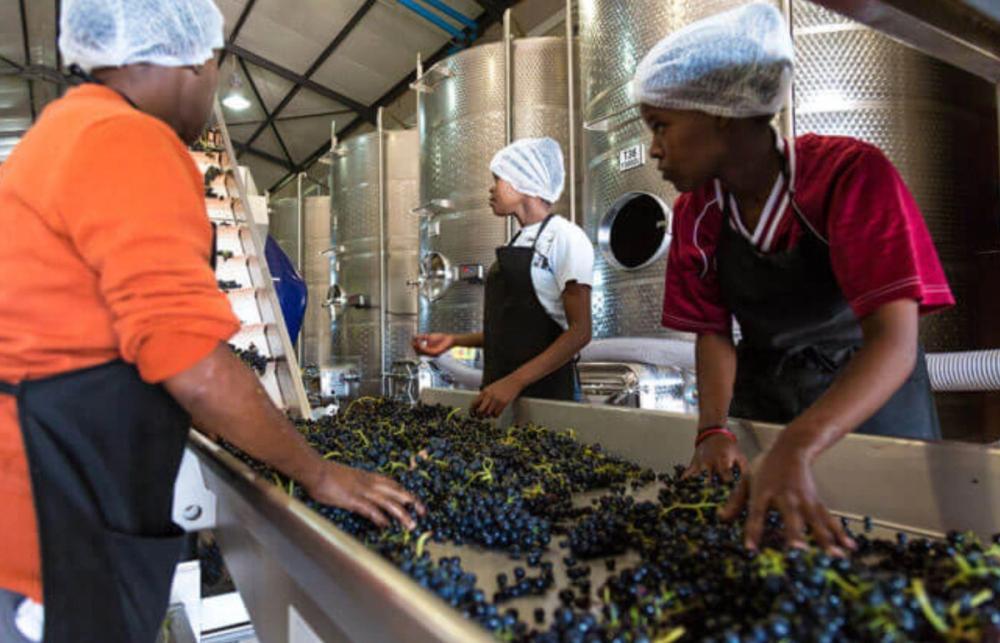
Journey’s End is very much part of the movement within South Africa to improve the conditions and lives of its workers
In 2020, Journey’s End received the Ethical Company award at The Drinks Business Green Awards, in recognition of the Journey’s End Foundation. Set up during the Covid months by Rollo Gabb to provide meals to the local community, it has now provided over 5,000,000 meals, over ten times the original goal. But the work of the Journey’s End Foundation hasn’t stopped there.
Journey’s End is very much part of the movement within South Africa to improve the conditions and lives of its workers. Stephanie Von Oppell, its UK brand manager, explained the commitment behind the Beat the Bully campaign to help tackle issues in local schools, as well as further programmes addressing issues with domestic abuse. Hand in hand with such a mission comes its Alcohol Outreach programme, open to workers and their families to improve education and provide a safe space for those affected. These initiatives saw Journey's End gain the Social Impact category award at Footprint Drinks Sustainability Awards 2022. Journeys End also takes great pride in its participation in the Cape Winemakers Guild Protégé Programme for the next generation of winemakers.
“We have an incredibly talented and dedicated assistant winemaker right now called Kaylin Willscott, a local lady from Somerset West,” continued Dawson. “Globally it’s pretty true but in South Africa it is definitely true that winemaking is a white male dominated position. Having the likes of Kaylin on board, hoping she feels like this is an industry for her is so important for the future of South African wine.”
Highlights of Journey’s End lunch
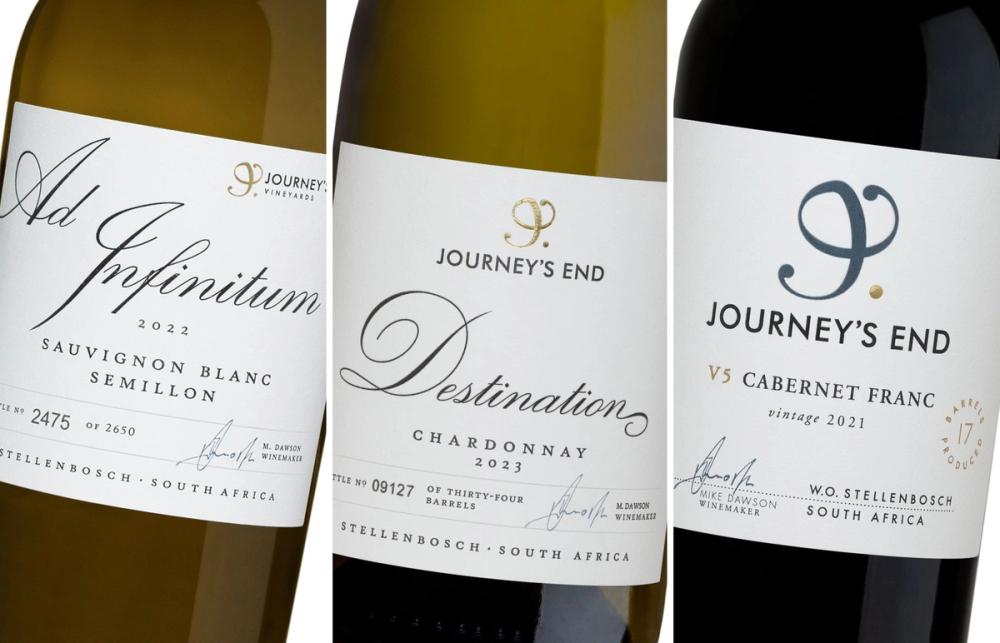
Journey’s End Ad Infinitum, 2022
Dawson is a big fan of Sauvignon Blanc, having worked closely with it during his time in Constantia. His belief that most people in South Africa want a short period of ageing for their Sauvignon Blancs, has seen him turn to the innovative 2500-litre Ovonum barrel, best described as a cross between an egg and a foudre.
“It’s 100% new oak only because we’ve just bought it,” pointed out Dawson. “It’s rounded at the bottom, triangular at the top, meaning we get more movement without intervention, so we only need to add sulphur right before bottling.
It’s a mix of 87% Sauvignon Blanc and 13% Semillon, so officially it could have been labelled simply as a Sauvignon Blanc. Dawson was keen not to do that. “We’re proud of the quality of the Semillon,” beamed the winemaker, “and we want to showcase that premiumisation that we think it gives the wine.” The wine itself has zingy, citrus acidity, peach and kiwi, and bags of grippy, salty minerality, with herbaceous-without-being-grassy lifts on the palate to finish.
Journey’s End Destination Chardonnay 2023
This 100% Chardonnay varietal is seen by the Journey’s End team as its pinnacle, being the first vineyard to produce a 5* Platters Chardonnay back in 2002. The wine is made with fruit from a single vineyard block that gets the sunlight the whole day through, with the sun rising on one side and setting on other.
“We get great even ripeness but also complexity,” noted Dawson. “One side of each row gets the morning sun which promotes zesty citrus notes, and the other gets afternoon sun which promotes stone fruit flavours.”
The wine is naturally fermented in oak (30% new) and followed by 12 months of ageing and partial MLC. The wine has a coating, stony minerality, lots of stone fruit, touch of cream, peach melba and a suitably long finish.
We also got to try the 2014, which highlighted the ability to age, but also the change in style Dawson has brought by reducing recent vintages down from the 100% Malo and higher percentage of new oak seen in the 2014. This was much smokier, with more obvious vanilla, cinnamon, and even tropical fruits. Previous winemaker (now cellar master) Leon Esterhuizen called it Destination as he wanted the wines to taste like the Burgundian wines he loved so much. The aged notes of honeyed cashews in the finish, along with the bitter pith and juicy finish, did evoke memories of some fine Maconnais Chardonnay.
Journey’s End V5 Cab Franc 2021
The V series is the varietal series from Journey’s End, with the Cabernet Franc joining the line-up in 2017. Before that, it had just been a blending variety in the Cape Doctor label, but the team saw a lots of potential in this vineyard, when it controlled the vigour of the plants. The wine is made in a 5000-litre elongated trunk vessel, open at the top for the fermentation, with frequent punch downs making the grapes work pretty hard for the first few days. After pressing, the fermentation is finished in stainless steel before 14 months in second and third use French oak.
“That’s how we made it back 2017 when we started out with just 1500 bottles,” remembered Dawson. “It was all very cowboy, but we loved it, so we kept it going.”
The wine is rich in red and black fruits, with savoury balsamic notes, herbal, tea leaf, olives, a touch of black pepper. It’s medium in body but has enough tannin to keep the heavier red lovers happy. There’s a lot of wine here for just £20.
Journey’s End wines are imported to the UK by Matthew Clark and Bibendum. For more information about the wines of Journey’s End, please contact Eleanor Standen at R&R Teamwork on eleanor@randr.co.uk.
Mike Turner is a freelance writer, judge and educator. He has been a regular contributor for The Buyer since 2016.
